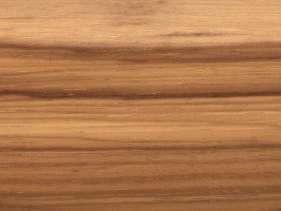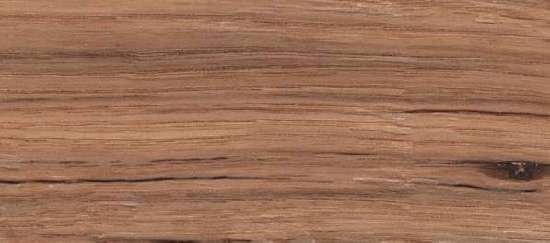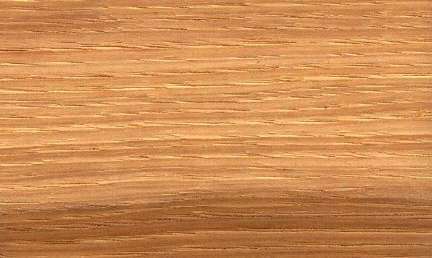  
Pecan (Carya illinoensis)
Family: Juglandaceae
Common names: Bitter pecan, Hickory, Nogal morado, Nuez encarcelada, Pecan, Pecan hickory, Sweet pecan
Distributed in: Mexico, United States (Central America, North America)
Distribution overview: The indigenous distribution of Carya illinoensis is in southeastern USA including the lower and middle Mississippi Valley and through to eastern Mexico. It thrives in open woodlands on river flood plains that are well drained. Trees can live for hundreds of years and reach 50 m in height with a trunk diameter of 2 metres. Pecans were harvested by Indian tribes well before the arrival of European settlers in the 1500's. They were introduced to Spain in the 1600's and are now grown in all temperate regions of the world although the USA remains the main producer. Pecan grows principally in the bottomlands of the Mississippi River valley. Its range extends westard from southern Indiana through Illinois, southeastern Iowa, and eastern Kansas, south to central Texas, and eastward to western Mississippi and western Tennessee.Pecan occurs locally in southwestern Ohio, Kentucky, Alabama, and central Mexico. Its best commercial development is on river-front lands of the Mississippi Delta and along major rivers west of the Delta to Texas.Pecan is cultivated in Hawaii
Common uses: Building materials, Chairs, Chests, Concealed parts (Furniture), Decorative veneer, Desks, Dining-room furniture, Domestic flooring, Dowell pins, Dowells, Drawer sides, Figured veneer, Fine furniture, Floor lamps, Flooring, Fuelwood, Furniture , Furniture components, Furniture squares or stock, Handles, Hatracks, Interior construction, Interior trim, Kitchen cabinets, Ladders , Living-room suites, Millwork, Office furniture, Paneling , Parquet flooring, Poles, Radio - stereo - TV cabinets, Rustic furniture, Shafts/Handles, Stools, Sub-flooring, Tool handles, Turnery, Vehicle parts, Wheelwright work
Product sources: Pecan is available at a moderate price on the U.S. market in the form of lumber, veneers and plywood.
Environment profile: Widespread
Tree size: Trunk diameter is 200-250 cm
Colors: the heart isReddish brown, Yellowand the sapwoodWhite, Yellow.The grain isWavy, the textureMediumand the lusterLow
Natural durability: Very durable, Vulnerable to attack by hickory bark beetle
Odor: No specific smell or taste
Kiln Schedules: T8 - D3 (4/4) T6 - D1 (8/4) US
Kiln Drying Rate: Naturally dries slowly
Drying Defects: Slight surface checking, Splitting
Ease of Drying: Thick Stock Requires Care
Comments: 'bird pecks' leave residue Deposits in the wood Mineral Deposits - Magnesium carbonate deposits are often present and 'Bird pecks' leave residue that crystallizes
Blunting Effect: Severe effect
Boring: Good (75+ pieces out of 100 will yield good to excellent results)
Carving: Fairly Difficult to Very Difficult
Cutting Resistance: Moderate to saw
Gluing: Satisfactory gluing properties
Mortising: Fairly Difficult to Very Difficult
Moulding: Requires special attention.
Movement in Service: Requires special attention.
Nailing: Fairly Easy to Very Easy, Poor nailing properties
Planing: Special attention required
Resistance to Impregnation: Wood is moderately resistant to treatment
Response to hand tools: Fairly Difficult to Difficult to Work
Routing recessing: Fairly Difficult to Very Difficult
Sanding: Extra care required for smooth surface
Steam bending: Good
Screwing: Fair to Good Results, Fairly Difficult to Very Difficult; Turning: Fairly Difficult to Very Difficult
Painting: Fairly Difficult to Very Difficult
; Polishing: Smooth polished surface; Staining: Stains well; Varnishing: Fairly Difficult to Very Difficult
;
- Numerical data Metric
- Numerical data English
- Strength properties
- References
 |
 |
 |
 |
| Item |
Green |
Dry |
Metric |
| Specific Gravity |
0,56 |
0,62 |
|
| Density |
|
|
kg/m3 |
| Bending Strength |
675 |
943 |
kg/cm2 |
| Crushing Strength |
53 |
118 |
kg/cm2 |
| Hardness |
|
809 |
kg |
| Impact Strength |
131 |
109 |
cm |
| Shearing Strength |
|
143 |
kg/cm2 |
| Stiffness |
94 |
119 |
1000 kg/cm2 |
| Tangential Shrinkage |
|
|
% |
| Radial Shrinkage |
|
|
% |
| Weight |
|
|
kg/m3 |
| Maximum Load |
0,98 |
1,05 |
cm-kg/cm3 |
| Toughness |
|
|
cm-kg |
| Static Bending |
|
|
kg/cm2 |
|
 |  |  |  | | Item | Green | Dry | English | | Bending Strength | 9604 | 13426 | psi | | Crushing Strength | 764 | 1686 | psi | | Hardness | | 1784 | lbs | | Impact Strength | 52 | 43 | inches | | Maximum Crushing Strength | 3910 | 7693 | psi | | Shearing Strength | | 2038 | psi | | Stiffness | 1343 | 1695 | 1000 psi | | Work to Maximum Load | 14 | 15 | inch-lbs/in3 | | Specific Gravity | 0.56 | 0.62 | | | Weight | 45 | 37. | lbs/ft3 | |
Resists denting and marring
Max. crushing strength = high
Heavy
Compression strength (parallel to grain) = high
Bending strength (MOR) = high
Pecans can be differentiated from true Hickories by weight, and by the narrow bands of parenchyma, which appear between the rays and between the large earlywood pores. (In hickories the band occurs after the first row of earlywood pores). Strength properties of C. illinoensis are similar to those of other hickories. Bending strength in the air-dry condition (about 12 percent moisture content) is high, and maximum crushing strength, or compression strength parallel to grain, is also high. It is hard - harder than Teak, and does not marr or dent easily. The wood is very heavy.
Boone, R. S., C. J. Kozlik, P. J. Bois, and E. M. Wengert.1988.Dry Kiln Schedules for Commercial Woods:Temperate and Tropical.USDA, Forest Service, General Technical Report FPL-GTR-57, Forest Products Laboratory, Madison, Wisconsin.California Department of Forestry.Comparative Physical & Mechanical Properties of Western & Eastern Hardwoods.Prepared by Forest Products Laboratory, University of California at Berkeley, Berkeley, California.n/d.Jackson, A. and D. Day.1991.Good Wood Handbook - The Woodworker's Guide to Identifying, Selecting and Using the Right Wood.Betterway Publications, Cincinnati, Ohio.Kaiser, J.Wood of the Month:Hickory.Wood and Wood Products, September, 1990.Page 46.Kline, M. 1981. Carya illinoensis - Pecan. In A Guide to Useful Woods of the World. Flynn Jr., J.H., Editor. King Philip Publishing Co., Portland, Maine. 1994. Page 86.Lincoln, W. A.1986.World Woods in Color.Linden Publishing Company, Inc., Fresno, California.Little, E.L.1980.The Audubon Society Field Guide to North American Trees - Eastern Region.Published by Arthur A. Knopf, New York.Panshin, A. J. and C. deZeeuw.Textbook of Wood Technology.McGraw-Hill Series in Forest Resources.McGraw-Hill Book Company, New York.USDA.1987.Wood Handbook:Wood as an Engineering Material. Agriculture Handbook No. 72.United States Department of Agriculture, Forest Service, Madison, Wisconsin.
|










